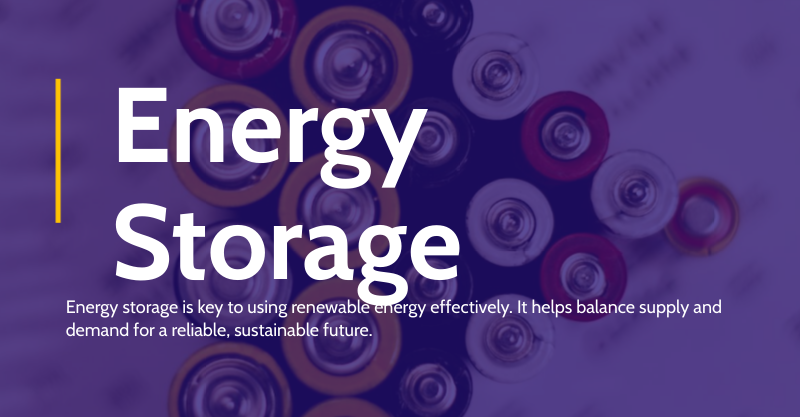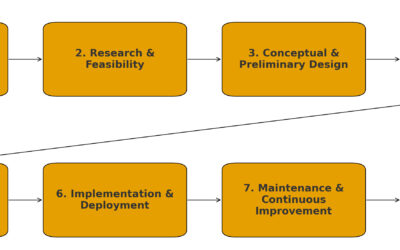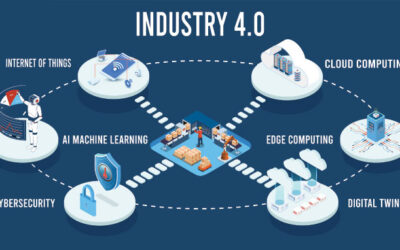As global demand for clean energy intensifies, renewable sources such as solar, wind, and hydropower are becoming integral to modern energy infrastructure. However, these energy sources are inherently intermittent—solar power is unavailable at night, wind patterns fluctuate, and hydropower may be seasonal. To achieve a stable and reliable renewable energy grid, effective energy storage solutions are essential.
Energy storage bridges the gap between supply and demand, storing excess energy produced during peak generation periods and delivering it when consumption rises. From advanced battery technologies to mechanical, thermal, and chemical storage methods, renewable energy storage systems are rapidly evolving, driving forward the global transition toward a more resilient and sustainable energy future.
The Role of Energy Storage in Renewable Integration
Before diving into the various technologies, it’s important to understand the core function energy storage plays in a renewable ecosystem. These are some of the key purposes:
- Grid Stability: Energy storage mitigates fluctuations in power generation, providing frequency regulation and voltage support to maintain a balanced grid.
- Load Shifting: Energy stored during off-peak hours can be used during peak demand, reducing reliance on fossil fuel peaker plants.
- Energy Resilience: Storage systems offer backup power in case of outages or generation shortfalls.
- Maximizing Renewable Use: By storing surplus generation, storage minimizes curtailment and maximizes the use of clean energy.
The ability to store renewable energy is no longer a luxury—it is a necessity for countries and companies seeking to decarbonize power systems and ensure energy reliability.
Battery Energy Storage Systems (BESS)
1. Lithium-Ion Batteries
Lithium-ion batteries dominate the current energy storage market due to their high energy density, long cycle life, and rapidly falling costs. Commonly used in electric vehicles (EVs), smartphones, and now increasingly in grid-scale projects, lithium-ion technology is the most commercially mature storage solution available today.
Advantages:
- Fast response time and high efficiency (above 90%)
- Modular and scalable for residential, commercial, and utility-scale use
- Mature manufacturing and supply chain infrastructure
Challenges:
- Limited lifespan compared to other technologies
- Safety concerns related to thermal runaway and fire risks
- Raw material constraints (e.g., cobalt, nickel)
Despite its limitations, lithium-ion remains the frontrunner for most short-duration energy storage needs, typically ranging from 2 to 6 hours.
2. Sodium-Ion and Zinc-Based Alternatives
As concerns over lithium supply and sustainability grow, alternatives like sodium-ion and zinc-based batteries are gaining momentum. These chemistries offer several potential advantages:
- Sodium-ion batteries use more abundant materials and can perform well in colder climates.
- Zinc-air and zinc-bromine batteries are non-flammable and offer improved safety and recyclability.
While still in the early stages of commercial deployment, these batteries could complement or eventually replace lithium-ion in specific applications.
Flow Batteries
Flow batteries differ from conventional batteries in that they store energy in external tanks of liquid electrolytes. These electrolytes flow through a central cell stack where ion exchange occurs to charge or discharge energy.
Popular Chemistries:
- Vanadium redox flow batteries (VRFB)
- Zinc-bromine flow batteries
Advantages:
- Decoupled energy and power capacity—ideal for long-duration storage
- Excellent scalability and durability (up to 20,000 cycles)
- Non-flammable and easily recyclable materials
Challenges:
- Lower energy density compared to lithium-ion
- Higher upfront capital costs
- Complex system design requiring large physical space
Flow batteries are well-suited for applications requiring 8 to 24 hours of storage or more. Their long cycle life and stable performance make them attractive for utility-scale renewable integration.
Mechanical Storage Solutions
1. Pumped Hydro Storage (PHS)
Pumped hydro is the most widely used form of energy storage worldwide, accounting for over 90% of global installed capacity. It works by pumping water to an elevated reservoir during periods of excess generation, then releasing it through turbines to generate electricity when needed.
Advantages:
- Long lifespan (often exceeding 50 years)
- Low operational costs and high efficiency (up to 80%)
- Gigawatt-scale capacity
Challenges:
- Site-specific: Requires suitable topography and water resources
- High environmental and permitting hurdles
- Long construction timelines and high capital investment
Despite its constraints, pumped hydro remains one of the most cost-effective and reliable storage technologies available for large-scale deployments.
2. Compressed Air Energy Storage (CAES)
CAES systems compress air into underground caverns or tanks during low-demand periods and release it through turbines to generate electricity during peak hours.
Advantages:
- Large capacity and long-duration storage
- Proven technology with multi-decade use in select regions
- Capable of integrating with renewable sources
Challenges:
- Limited suitable geologic formations
- Lower round-trip efficiency (typically 40–60%)
- Requires fossil fuel combustion in traditional systems (although hybrid and adiabatic versions avoid this)
Next-generation CAES systems that eliminate fossil inputs are in development, which could broaden the appeal of this technology.
3. Gravity-Based Storage
A newer class of mechanical storage solutions leverages gravity by lifting heavy weights when energy is abundant and lowering them to generate electricity when demand increases. Systems such as Energy Vault and other vertical-lift designs are under active development.
Advantages:
- Simple mechanics with minimal degradation
- Uses recyclable materials like concrete and steel
- Potential for 30+ year service life
Challenges:
- Still in early commercial phases
- Requires significant land or structure height
- May face limitations on energy density and urban deployment
Gravity-based storage offers a promising complement to chemical batteries for long-duration, low-maintenance needs.
Thermal Energy Storage (TES)
Thermal energy storage systems store excess energy as heat or cold, which can then be converted back to electricity or used directly for industrial or building applications.
1. Molten Salt
Molten salt storage is commonly paired with concentrated solar power (CSP) plants. Salt retains heat at high temperatures, which is then used to produce steam and drive turbines.
Advantages:
- High-temperature stability and low cost
- Enables dispatchable solar power (up to 15 hours of storage)
- Proven performance in utility-scale CSP projects
Challenges:
- Requires large, insulated storage tanks
- Integration limited to CSP or compatible heat systems
- Complex thermal management
2. Ice and Chilled Water Storage
These systems create ice or chilled water during off-peak hours and use it to cool buildings during peak daytime periods.
Advantages:
- Effective demand-side management for buildings
- Reduces air conditioning load on the grid
- Cost-effective and space-efficient
Challenges:
- Limited to thermal rather than electrical storage
- Not suited for universal grid integration
While not as prominent in large-scale renewable applications, thermal storage is highly valuable in energy-efficient building design and commercial energy management.
Hydrogen and Power-to-X Storage
Hydrogen energy storage involves using surplus renewable electricity to produce hydrogen via electrolysis. This hydrogen can then be stored and later used to generate electricity (via fuel cells or turbines) or as a feedstock for transportation and industry.
Advantages:
- High energy density and long-duration storage (days to months)
- Enables sector coupling across electricity, transport, and industry
- Zero emissions when using green hydrogen (produced via renewable electrolysis)
Challenges:
- Low round-trip efficiency (30–40%)
- High infrastructure and capital costs
- Requires large-scale deployment for economic viability
Hydrogen is seen as a keystone in the future energy landscape, particularly for decarbonizing sectors where batteries are impractical. Power-to-X technologies—where electricity is converted to hydrogen, ammonia, methane, or synthetic fuels—expand the flexibility of renewable energy storage.
Hybrid Energy Storage Systems
In practice, many advanced renewable grids deploy hybrid storage systems that combine multiple technologies to balance cost, duration, and application-specific needs.
For example:
- Lithium-ion for short bursts of high power or frequency regulation
- Flow batteries or hydrogen for multi-hour to multi-day storage
- Thermal storage for building or process heating
- Pumped hydro or gravity systems for seasonal reliability
These hybrid architectures improve grid flexibility, reduce reliance on any single supply chain, and optimize investment return by matching storage types to different operational timeframes.
The Economics of Energy Storage
The rapid growth of storage technologies is closely tied to falling costs. According to recent industry trends, the levelized cost of storage (LCOS) has declined by more than 80% for lithium-ion systems over the past decade.
However, evaluating the true economic viability of a storage solution requires more than just capital expense. Key financial considerations include:
- Levelized Cost of Storage (LCOS)
- System lifespan and degradation rates
- Revenue stacking (providing multiple services to the grid)
- Incentives and regulatory frameworks
- Installation and permitting costs
The most successful storage projects are those that integrate effectively with local energy markets, grid regulations, and renewable generation patterns.
Emerging Trends and Innovations
1. Second-Life Batteries
Used EV batteries still retain significant storage capacity and are increasingly being repurposed for stationary storage applications. This approach reduces waste, extends product life, and provides lower-cost solutions for grid or community use.
2. AI and Smart Controls
Artificial intelligence and machine learning are being applied to optimize energy storage operation. From real-time dispatch decisions to predictive maintenance, smart systems are improving storage efficiency and asset longevity.
3. Vehicle-to-Grid (V2G)
Electric vehicles (EVs) are poised to become a decentralized storage network. V2G technology enables EVs to discharge power back into the grid, acting as mobile storage units during peak demand or outages.
4. Long-Duration Storage (LDS)
Technologies capable of storing energy for 10+ hours—like flow batteries, hydrogen, and gravity systems—are drawing increased attention. These solutions are critical for 100% renewable grids and for managing extreme weather-related supply disruptions.
Energy storage is the linchpin of a resilient, low-carbon energy system. As nations ramp up renewable deployments to meet climate targets, the ability to store and dispatch that energy efficiently and affordably will determine the success of the clean energy transition.
From lithium-ion to hydrogen, gravity systems to thermal tanks, each storage technology brings unique strengths and trade-offs. The future lies in diversified, intelligent, and hybridized energy storage networks tailored to the geographic, economic, and technical needs of each region.
Investments in storage not only enhance grid reliability but also unlock the full potential of renewable energy. With continued innovation, supportive policy, and cross-sector collaboration, energy storage solutions will continue to evolve as the backbone of the clean energy era.








